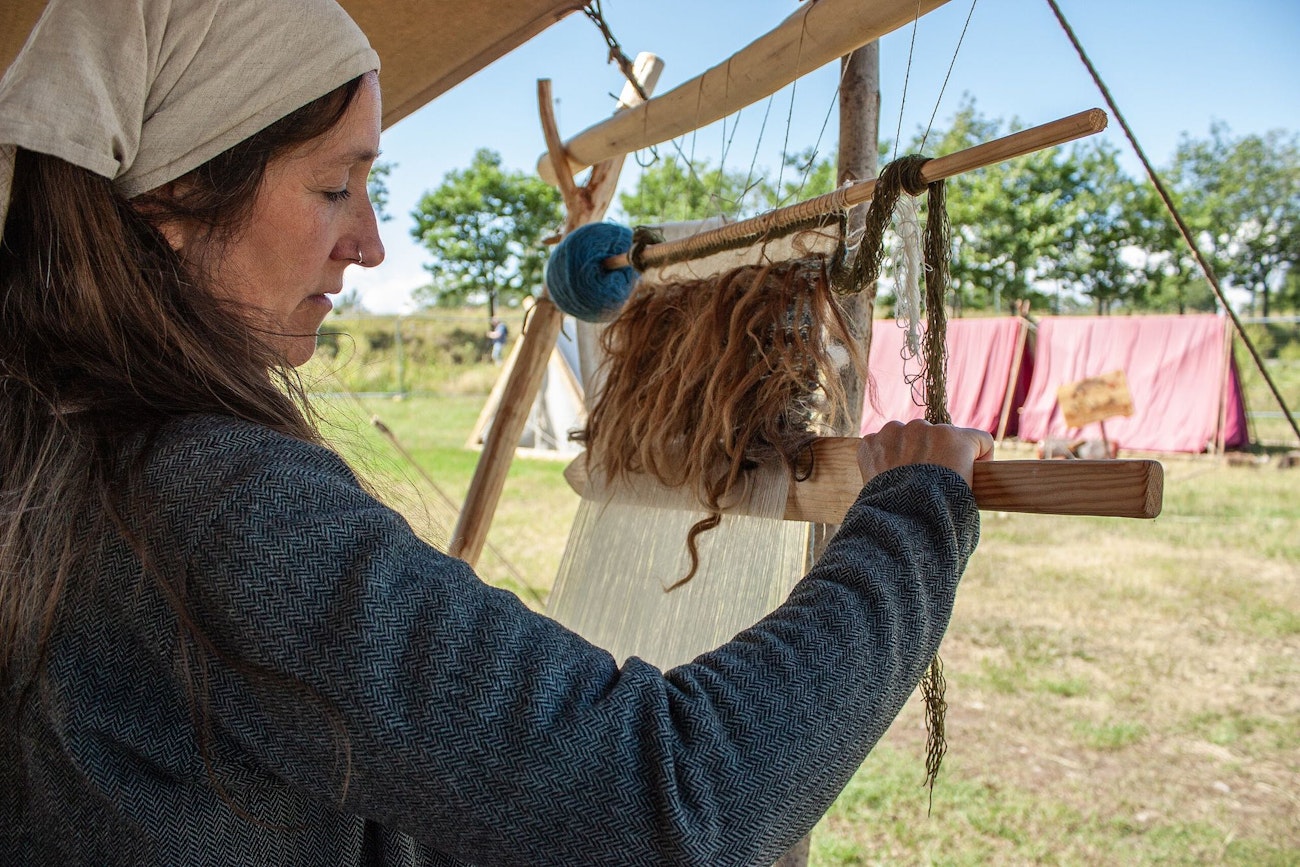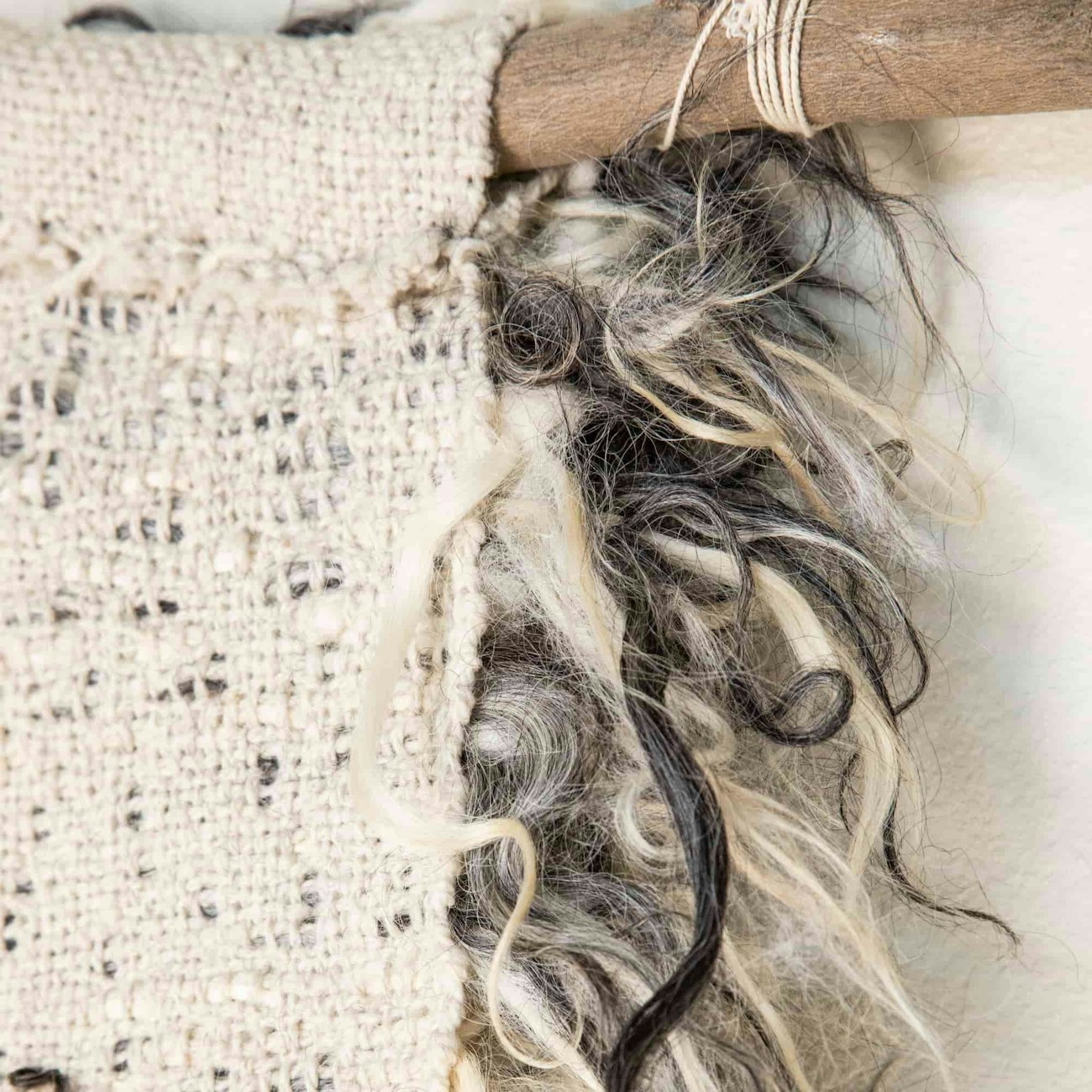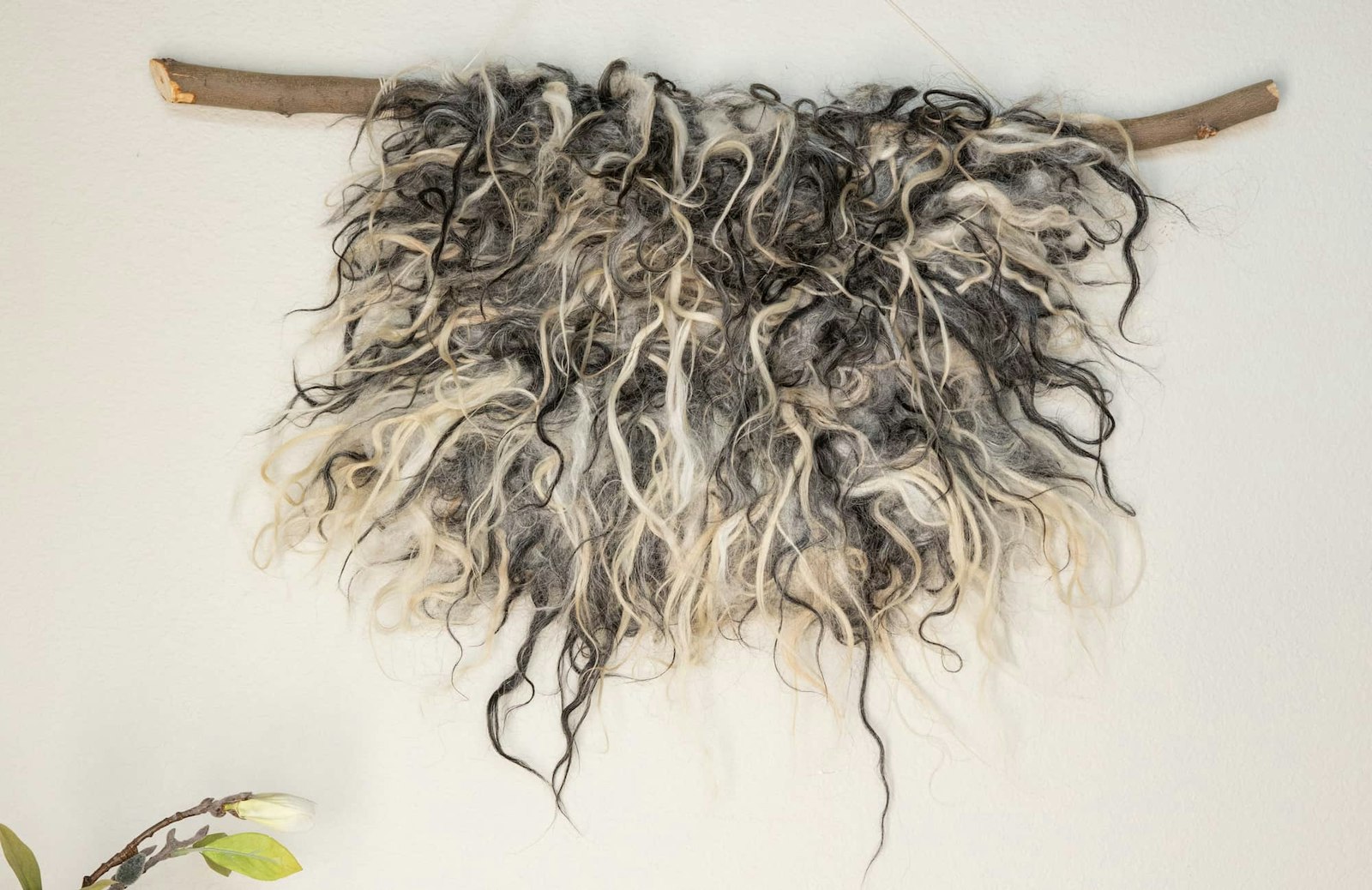While flipping through Little Looms Spring 2023, you might notice something that sticks out a bit—a project not quite like the rest. Amid the towels and scarves, you’ll find the shaggy Varafeldur Wall Hanging. Believe it or not, these shaggy garments have a fascinating history that can be traced back to the Viking Age (800 CE–1050 CE).
While designer Rebecca Cengiz-Robbs interpreted the Icelandic varafeldur as a wall hanging, traditionally, varafeldur (sometimes spelled vararfeldir) were much larger and used as cloaks. Medieval weavers wove these large and heavy textiles using warp-weighted looms. A base cloth of wool yarn woven in plain weave held the locks of wool, which were attached using Icelandic rya knots to keep them firmly in place. This created a cloth with fluffy locks of wool on one side and a smooth, plain-weave ground cloth on the opposite side.
 A Norwegian weaver demonstrates weaving a cloth similar to the varafeldur on a warp-weighted loom. She uses a traditional weaving sword to beat in each pick. Photo by Monica Ferreira via CC 4.0.
A Norwegian weaver demonstrates weaving a cloth similar to the varafeldur on a warp-weighted loom. She uses a traditional weaving sword to beat in each pick. Photo by Monica Ferreira via CC 4.0.
Varafeldur might look excessive to modern eyes, but for a seafaring culture in a cold climate, they could be literal lifesavers. The wool kept the wearer warm, and the lanolin in the locks added a water-resistant component. Wearing a varafeldur at sea helped protect the wearer from the elements. Personally, I think varafeldur also added to the fear-inducing image of the Viking, intentional or not. I can’t help but imagine a burly Viking warrior would be rendered even more terrifying while wearing one of these woolly cloaks.
Of course, to be worn by Vikings, varafeldur had to first make their way across the ocean to Norway. For that, you can thank the Norse King Harald Gråfell (935 CE–970 CE). According to legend, one day, some Icelandic merchants arrived in Norway with a large inventory of varafeldur that they could not sell. They offered the king one of their cloaks as a present, and King Harald not only accepted, but he loved it so much he wore it immediately and often. In fact, the Gråfell in King Harald’s name comes from his love of varafeldur: gråfell, which literally translates into “gray cloak,” is the Norwegian word for varafeldur. Once the king started wearing these cloaks, as so often happened, varafeldur, now gråfell, became popular garments.
 While the varafeldur might look unruly from the front, the back showcases the plain-weave ground cloth. Photo credit: Matt Graves
While the varafeldur might look unruly from the front, the back showcases the plain-weave ground cloth. Photo credit: Matt Graves
While in Norway the gråfell were eventually mostly replaced by a heavily fulled fabric called vadmal (also spelled wadmal), varafeldur remained popular in Iceland. Today, they’re celebrated as a part of Iceland’s long and storied weaving history and beloved by historians and textile enthusiasts alike.
If you’d like to weave your own varafeldur, or at least a miniature version (no warp-weighted loom required!), check out the Spring 2023 issue or get the individual PDF in our library.
Happy Weaving!
Christina
Photo used with permission via CC4.0 license. creativecommons.org/licenses/by-sa/4.0

